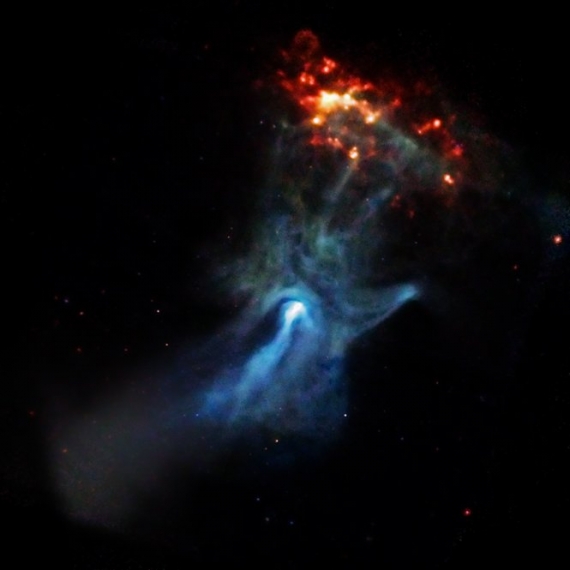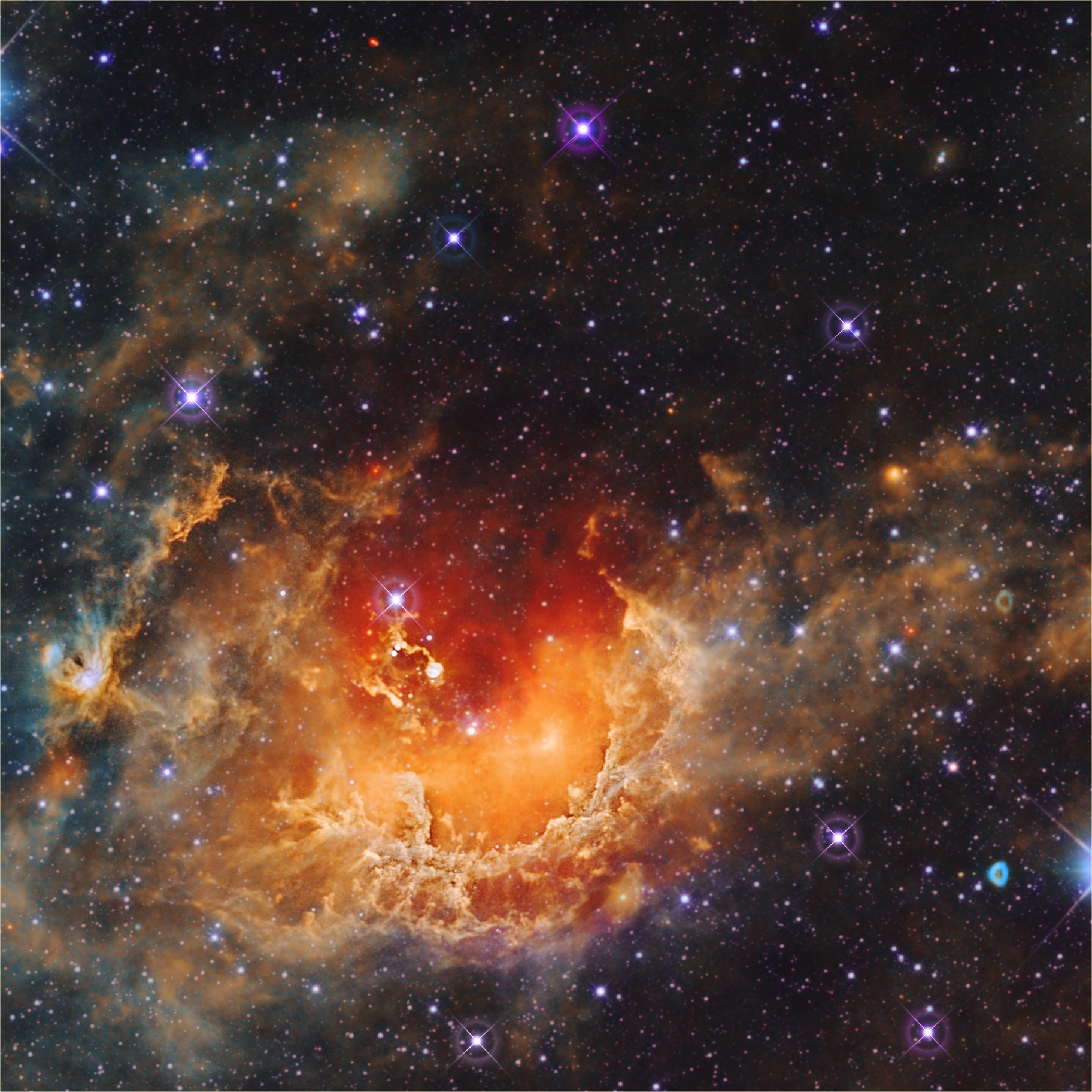
Astronomers have unveiled a breathtaking spectacle unfolding in the Puppis constellation, approximately 1,300 light-years away from Earth.

The cosmic tableau, captured by the Dark Energy Camera on the Víctor M. Blanco 4-meter Telescope in Chile, has been whimsically nicknamed “God’s Hand.”

This celestial phenomenon, a cometary globule, presents a ghostly hand-like structure extending across the universe, which appears to be reaching out towards a distant spiral galaxy.

The image of “God’s Hand,” officially known as CG 4, showcases the ethereal beauty of these isolated cosmic clouds, composed of dense gas and dust, wrapped in hot, energetic material.

A cometary globule is a type of Bok globule or dark nebula, distinguished by its extended tails that closely resemble those of a comet.

This remarkable discovery offers more than just a visual treat; it provides insights into the enigmatic origins of cometary globules.

Despite their comet-like appearance, these structures are unique and their formation processes remain a topic of speculation among astronomers. CG 4, for example, has a dusty “head” spanning 1.5 light-years across and a tail that stretches for 8 light-years.

The cometary globule was first spotted by chance in 1976, and since then, the faint clouds have been elusive to astronomers due to their dimness and the common obstruction of their tails by interstellar dust.

However, the Dark Energy Camera’s specialized filter enables detection of the subtle red glow emitted by ionized hydrogen in the outer rim and head of CG 4. This red glow is a signature of hydrogen being struck by radiation from nearby hot, massive stars.

The image of CG 4 ignites imagination, depicting a twisting cloud that seems to claw towards ESO 257-19 (PGC 21338), a spiral galaxy more than 100 million light-years away.

While this interaction is an optical illusion due to the vast distances involved, the visual connection between these vastly separated cosmic entities emphasizes the scale and mystery of our universe.

Astronomers believe that the formation of cometary globules could result from the disruption of previously round-shaped nebulas by supernovae or the influence of winds and radiation from nearby massive stars.

It’s thought that in the case of the cometary globules located within the Gum Nebula, their tails pointing away from the nebula’s center suggest a connection to the central supernova remnant and pulsar, supporting the latter theory.

“God’s Hand” is not only a cosmic spectacle but also a cradle of potential new stars. The globule contains enough gas and dust to facilitate the birth of several stars comparable in size to our sun. Unfortunately, while stellar radiation makes the globule visible, it is also gradually destroying the head of the structure.

CG 4 is one of many cometary globules scattered across our Milky Way galaxy, with a significant number residing within the Gum Nebula, the slowly expanding remains of a stellar explosion that took place about 1 million years ago. The Gum Nebula is estimated to contain 31 cometary globules in addition to CG 4.
Relevant articles:
– Cosmic ‘God’s hand’ in Milky Way galaxy appears in new telescope image, WMUR
– New telescope images reveal ghostly ‘God’s Hand’ in Milky Way reaching across the cosmos, Yahoo News Singapore

